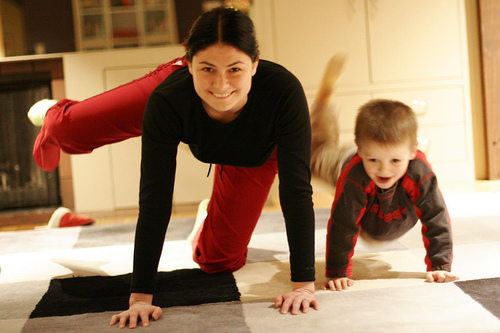What Is a Happiness “Set Point”?
If you’ve ever tried to lose or gain weight, you probably know what a set point is. It’s that number on your scale where your weight “plateaus” and doesn’t want to budge. Even if you manage to change it, your weight will gravitate back to the number as soon as you let up. Recent research suggests that people may have a happiness set point as well.
One study interviewed lottery winners as well as people who had suffered spinal cord injuries. The researchers found that the lucky lottery winners would often experience a temporary increase in happiness but after a time the effect would fade. The reverse seemed to happen with the spinal injury group; first they experienced an understandable decrease in happiness, but often their sense of well-being tended to return to pre-accident levels.
Can We Measure Happiness?
The notion of a happiness set point suggests that we are limited to an “inborn” level of happiness that’s not likely to change much no matter what happens in life. This is good news if you are on the cheerful end of the spectrum. Not so good if you tend to be gloomy. But is it really true?
Let’s take a closer look at how these studies are typically designed. It’s obvious “measuring” happiness can never be as precise as weighing in on a scale. The problem is, happiness research depends on subjective self-assessments. “On a scale of 1 to 10 how happy do you think you are compared to other people?” “Do you laugh a lot?” That sort of thing. Such surveys can generally indicate what a person believes about themselves, but they don’t really prove anything. Secondly, unless the researchers had a time machine, the only way they could have evaluated the lottery winners’ and spinal injury patients’ pre-event “baseline” of happiness would be to ask them to remember what they thought it was. Again, a notoriously unreliable scientific method.
Studies of Happiness in Identical Twins
However researcher David T. Lykken found evidence that identical twins have 50 percent more similar levels of happiness than non-identical twins.This was true even among twins who grew up in different households. This strongly suggests a genetic factor. As a result it’s been widely reported in popular books and articles that our level of happiness may be 50 percent genetically determined.
Maybe you’ve seen the pie chart dividing the factors influencing your happiness: 50 percent of happiness is ascribed to the theoretical happiness set point. External circumstances account for 10 percent but a whopping 40 percent of happiness is determined by “intentional activity.” Regardless of your set point, you still have a lot of room to influence your own happiness.
The first thing to do is realize you have a choice, even when dealing with difficulties. Marci Shimoff , author of Happy for No Reason suggests, “The next time you’re faced with a challenging situation that gives rise to negative thoughts and bad feelings, find an equally true thought about the situation that makes you feel better – and lean into it.”
7 Simple Ways to Raise Your Happiness Set Point
1. Focus on solutions instead of problems.
Accept the situation, look at the choices available, and take some action. Even baby steps help.
2. Don’t believe every negative thought you have.
In order to help you survive, your brain is wired to pay more attention to whatever it perceives as threatening your survival. Ask yourself if what you are ruminating about is actually life-threatening. Is it even helpful? If not, gently refocus your mind on something positive – or better yet, something that makes you laugh. Even better, laugh at yourself.
3. Develop a positive explanatory style.
Optimists are happier and optimism can be learned.
4. Practice gratitude.
I suggest something I call Micro Gratitude. Look for the tiny things you usually take for granted and feel appreciation for them. Aren’t you thankful for hot running water? A car that starts? Your pillow? Your next breath? Of course you are!
5. Take good care of your body.
You know the drill: Get plenty of rest, healthy food, and exercise. What’s good for your body is good for your brain. Obvious right?
6. Cultivate healthy relationships.
Don’t put off calling a friend. Make it a point to spend quality time with people you love. Don’t gossip!
7. Practice random acts of kindness.
It’s amazing how much better you feel when you make someone else feel better. Make a positive difference in someone’s life today. Smiles and hugs count.


